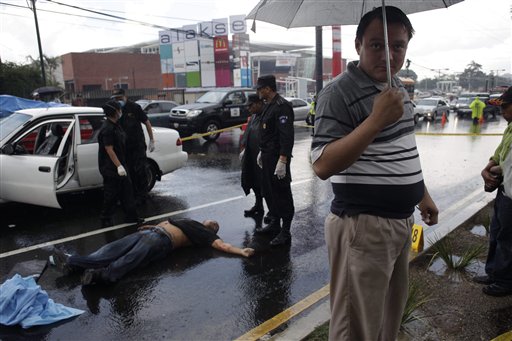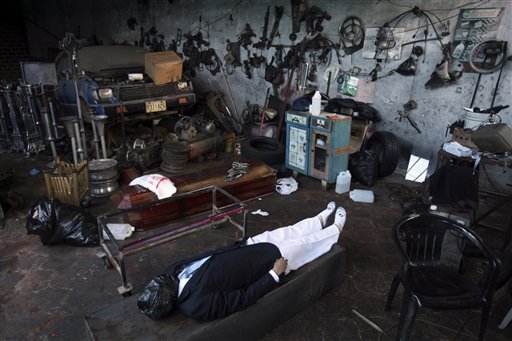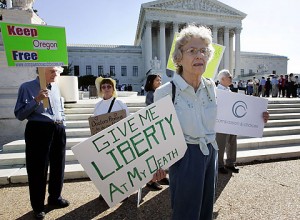Samantha asks the Death Reference Desk:
A couple relatives and I just had my aunt’s ashes put in ink for a memorial tat. My question is since she was so sick, will there be a transfer or will it be okay since she was cremated?
The short answer is: Yes, it’ll be okay. Cremators run between 1400 and 1800 degrees Fahrenheit, which is well beyond hot enough to destroy the pathogens that made the aunt sick. As a result, the cremains will be rendered nonhazardous and useable in tattoo ink.
The long answer is also: Yes, it’s okay, meaning there won’t be a risk of catching her disease. However… internet scavenging and talking with those in the know reveal a lot of confusion about the health risks with using cremains in memorial tattoos: hearsay, misinformation, nondisclosure and a heck of a lot of personal experience — much of it positive — but nothing by way of definitive research or official guidelines from either the tattooing community or health officials.
We get a lot of traffic at DeathRef from people searching for info on memorial tattoos and the use of cremains therein; sparked by Samantha’s question, I decided to do some more digging. A quick note for those unfamiliar with the topic: a memorial tattoo is any tattoo that commemorates a deceased loved one (person or pet), perhaps with his or her image, name, birth and death dates or other personal or religious symbols. That’s it — you don’t need to have cremated ashes mixed into the ink to have a memorial tattoo, in fact, most people don’t. The idea is, however, growing in popularity — if not in practice, then certainly in public awareness about it.
There are three main areas of contention: health, legal/liability issues and ethics. The health concerns are understandable but possibly misdirected — that is, having more to do with cultural taboo than science. While precautions must be taken to ensure everything is sanitary (as with any normal tattooing), the idea that death in all its forms is inherently dirty and to be avoided at all costs — and certainly not deliberately injected into one’s skin — seems to play into the health and safety-oriented objections.
Nonetheless, and most certainly, following cremation, care must be taken to ensure no contamination is introduced to the ashes (from careless handling, airborne germs, etc.). Disagreement exists whether the ashes are “sterilized” from the cremation itself. Many suggest the ashes should be oven baked at home or at a hospital or lab before being mixed in the ink; just as many call foul (me included), as the temperature in the crematorium definitely far exceeds anything you could do at home and likely in other facilities as well.
A UK tattoo artist writing in The Tattoo Forum elaborates on the idea of sterilization, stating one method “involves the further use of heat and the other involves a chemical exposure process” but withholds details due to “the restraints of not allowing unlicensed tattooing.” Fair enough? Perhaps… it is frustrating, though, to be unable to access solid, reliable information. If there’s any chance the cremains have been contaminated (for instance, if they’ve been stored for an extended period in a non-hermetically sealed container), then they should definitely be sterilized in some manner.
The major health-related claim is that the body will reject the ashes as a foreign substance. As such, only a tiny portion should be used, with no significant pieces of bone present — only the finest particles. How tiny is tiny? Sue C. in a Yelp thread says her artist retrieved cremains for her tattoo on the tip of a toothpick.
Also keep in mind that the term “ashes” is misleading; cremains are pulverized bone fragments, sand-like in texture. Some suggest first grinding them further with a (sterilized) mortar and pestle. Either way, they won’t dissolve in the ink but instead remain suspended. In a blog post at Ask BME (Body Modification Ezine), someone comments that she “had a good sized ‘chunk’ put in on purpose so that I could feel him [her dog] in there.” This is probably not recommended — then again, in this case, it seems to have turned out fine.
The cremains will thicken the ink — the more present, the denser the ink, which may give it a slightly raised feel, almost like puffy paint. This would be long-term — different from the initial scabbing, which is common in regular tattooing as the area heals.
As for rejection or other complications such as infections, these happen with normal tattooing, either from personal predisposition (being allergic to or irritated by certain kinds or colors of ink), non-sterile tattooing equipment or environments or poor post-tattooing care. Needless to say, you should always get inked by a professional and follow all instructions for keeping the tattoo, cremains-infused or not, clean as it heals.
Does the addition of cremains increase one’s risk of complication? Well, wouldn’t we all like to know. It would seem reasonable to say yes, as it introduces one more variable, but given all the other variables and protocols to avoid problems, an increased risk could be negligible or even eliminated with proper procedure and care. In other words, someone vigilant about doing everything right may be no more or less likely to have problems than for regular tattoos. Of equal importance and interest, for problems that do arise, it’s likely impossible to know which is the culprit: the cremains or the ink itself, which is just as much a foreign substance.
The practice is legal insofar as it’s not explicitly prohibited — but there are certainly laws about the misuse of human remains. Whether this applies is up for debate. People who get cremains-infused memorial tattoos obviously have no qualms about it, in fact, they see it as the ultimate tribute: a way of having a part of the person with them forever, and in a more serious, permanent way than other death memorializing, such as jewelry that incorporates ashes.
But I have yet to see mention of whether the deceased were aware of and consented to the idea, or discussion of whether this matters. It also has a ways to go as far as social and cultural acceptance (that whole “death is taboo and dirty” thing again). Those with cremains tattoos say they choose wisely who they tell to avoid needlessly disturbing people, and that the tattoo is meant for personal remembrance anyway — not for showing it off, at least the boasting the dead person is actually in the ink! part. Without question, some people are appalled by the practice — including tattoo artists who refuse to do it. Several websites report the difficulty of finding a willing artist.
This reluctance is more than moral objection and routine squeamishness. Though no laws forbid the practice, tattooists often fear liability if something goes wrong, even with waivers cogently signed. Though it’s not specifically illegal, there is legal uncertainty with this uncharted territory. Having a normal tattoo go awry is one thing — everyone involved knows the risks. Having one with cremains bubble with lesions because well, the truth, Your Honor, is there’s a dead person in there… is quite another, regardless of whether the cremains are the reason for complication.
Not only is it difficult to track down an artist who does this, those who do do it don’t seem to advertise it, at least not on the web. This may point to a desire to keep it underground — not for exclusivity, but to avoid public and official scrutiny that may try to regulate or ban it altogether. Is this a real possibility? Hard to say. Tattooing in the United States has spotty regulation, and this seems to me like unwanted attention, however ecstatic and grateful the customers who choose to remember their loved ones in this way.
Needless to say, it’ll be interesting to see how the practice evolves in social, medical and legal contexts — and I apologize in the meantime for my speculative tone and inconclusive take on the topic. As said, information is scarce, especially authoritative, research-based facts, and it may take awhile for this to improve. Growing in popularity or not, it’s still a fringe practice — one that creeps out even the freakiest.






 So yeah. There are a number of more important articles that I SHOULD be posting to Death Ref right now, but I couldn’t resist this one. Especially since Swedish officials are saying that Elk can become aggressive after eating fermented apples.
So yeah. There are a number of more important articles that I SHOULD be posting to Death Ref right now, but I couldn’t resist this one. Especially since Swedish officials are saying that Elk can become aggressive after eating fermented apples. 


 The article also discusses this apparently HUGE online incident (based on what the almighty Google showed me) from a 2005 World of Warcraft funeral. Mourning avatars gathered in-game to pay their respects and were slaughtered by a rival group. It’s all like some kind of crazy drive by shooting at a funeral for a rival gang member or something.
The article also discusses this apparently HUGE online incident (based on what the almighty Google showed me) from a 2005 World of Warcraft funeral. Mourning avatars gathered in-game to pay their respects and were slaughtered by a rival group. It’s all like some kind of crazy drive by shooting at a funeral for a rival gang member or something.